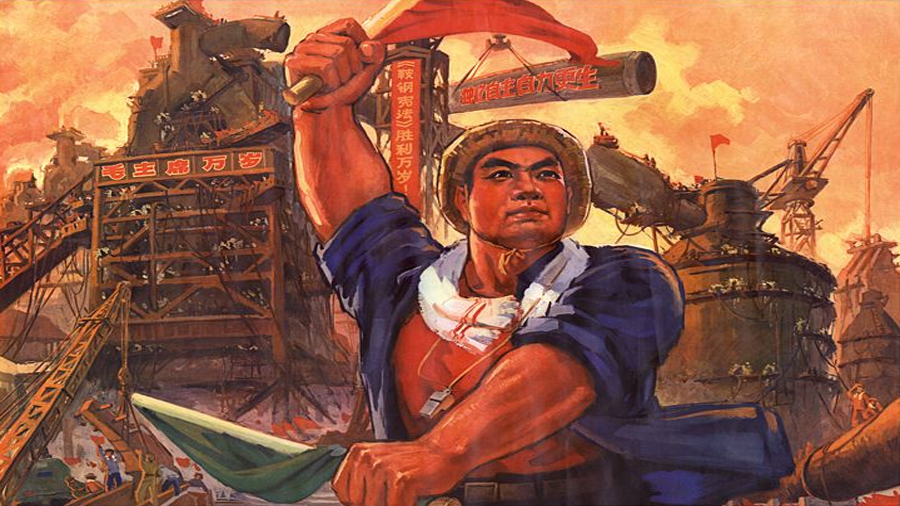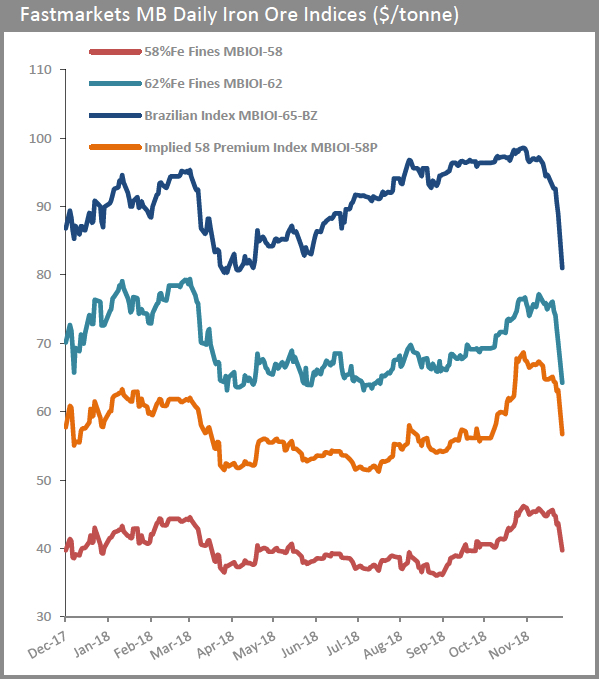
Robust global steel output did nothing to stop a rout in iron ore prices on Monday, with the seaborne benchmark cratering amid growing fears about an economic slowdown in China and the impact of a trade war between the world’s two largest economies.
Benchmark prices at the Chinese port of Qingdao of 62% Fe content ore fell 8% on Monday to trade at $64.25 per dry metric tonne, according to data supplied by Fastmarkets MB. Steelmaking coal (premium hard-coking coal FOB Australia) also retreated, falling to $218.46 a tonne Monday and is now trading 16% lower than at the start of the year.
The pullback in seaborne iron ore and met coal follows a sell off of steel futures in China, with Shanghai rebar entering a bear market – down more than 20% from seven-year highs hit in August.
More pain for iron ore prices lies ahead thanks to rising supply, sluggish demand from the property sector and a shift to electric arc furnaces as scrap availability inside China expands

Source: Fastmarkets MB
According to data released by the World Steel Association on Friday, Chinese output, which exceeds that of the rest of the world combined, in October rose 9% from the year before to a record 82.5m tonnes for the month. For the first 10 months Chinese furnaces pumped out 7.6% more steel. Numbers from China’s National Bureau of Statistics have production jumping 14% compared to last year.
The ramp up comes ahead of winter production cuts mandated by Chinese authorities and healthy margins for the country’s steelmakers, which have now evaporated.
In a note released before the recent pullback, Capital Economics chief commodity strategist Caroline Bain predicted more pain for iron ore prices ahead thanks to rising supply, sluggish demand from the property sector and a shift to electric arc furnaces as scrap availability inside China continues to expand.
Capital Economics believes the price of iron ore had risen to levels not supported by supply and demand and is forecasting end-2019 level of $55 per tonne. One bright spot is the substantial premium paid for higher grade ore from top producers in Brazil and Australia as Chinese steelmakers continue to reduce pollution.
World crude steel output increased 5.3% year on year to just 1.5 billion tonnes for the first 10 months of 2018, according to the World Steel Association.
US steel output in October was up 10.5% year-on-year as import tariffs continue to support domestic steel prices. Year to end-September output is up 5.1% on the back of diminished competition from imports encouraging the restart of idled plants.
India is on course to overtake Japan as the world’s number two steel producer after growing output by 5.5% from January to September to 88.4m tonnes. The exception among the top producers, output from Japanese mills are flat this year.
Comments
krauch
Chart shows the effect of winter production cuts mandated by Chinese authorities. Don’t think it means world economy is collapsing. Let’s see what happens in next 6 months before going into panic mode.